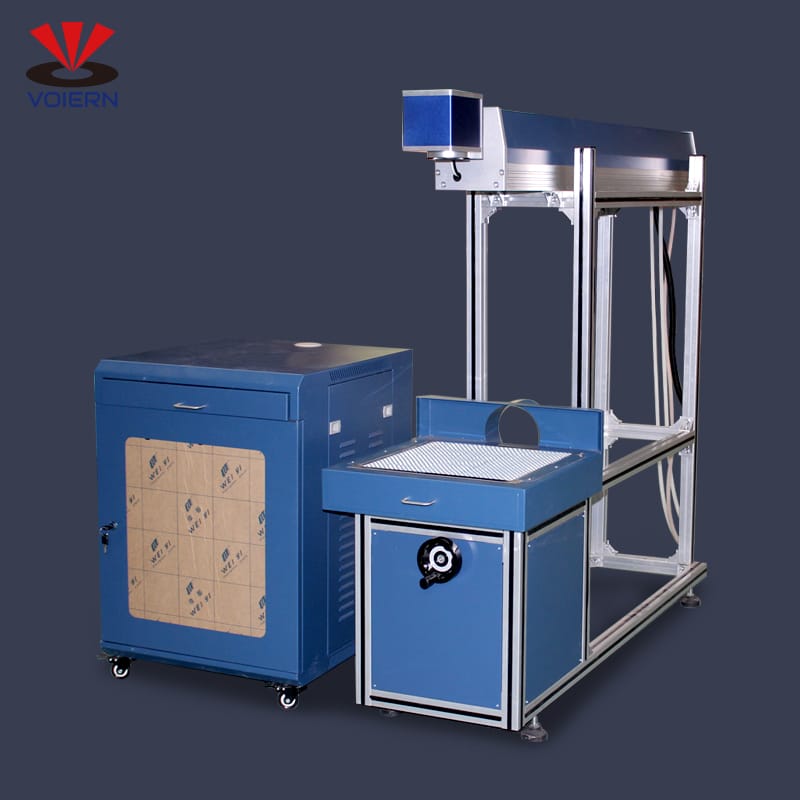Laser marking plastic
Laser marking plastic
Plastic is an important packaging material. The marks used for identification, such as trademarks, barcodes and serial numbers on plastic products, are usually produced by external processing methods such as printing, labeling, hot stamping and shrink packaging, or by mechanically directly on the surface of plastic products. Processing, such as embossing, engraving, punching, etc. form marks. The use of a laser marking machine to print marks on the surface of plastic products is a new type of marking technology that has a high processing speed, maintains the inherent surface characteristics of plastic products, and makes text, numbers or icons and plastic products uniform. Plastic laser marking machines use laser beams to directly generate marks on plastic surfaces, including marks, labels, characters, lines, numbers, and even colors, without the need for other processing steps.
Some industrial plastics are more suitable for laser marking than other materials. In some cases, the color contrast achievable by using a laser does not meet the readability and high quality marking required by fast marking techniques. However, this problem can be solved by the use of special laser-sensitive additives such as fillers, stabilizers and non-fading pigments. This greatly improves the optional experimental study for laser marking materials. Plastics commonly suitable for these experiments are polyethylene, polystyrene, polyoxymethylene, polyurethane, polypropylene, polyvinyl chloride.
Laser absorption characteristics of different plastics
In order to be used for laser marking, plastic must absorb a certain amount of laser beam. At the macro level, most plastics only absorb ultraviolet and far infrared rays in the electromagnetic spectrum (CO2 laser, wavelength 10.6 microns). However, by using additives, fillers and pigments, the absorption characteristics of the material can be altered to increase its ability to absorb laser beams in the near-infrared (1064 nm) or visible green (532 nm) bands. This allows for faster processing and better contrast.
Most of the lasers used for marking emit red light at a wavelength of 1064 nm. But tools designed specifically for processing plastic and semiconductor materials enable lasers to operate in the green (532 nm) and ultraviolet (355 nm) range. The application of ultraviolet light is particularly interesting because they open up a new era of plastic marking. The energy produced by short-wave ultraviolet light initiates a photochemical reaction but does not destroy the material due to excessive heat input. When processing important materials such as plastics incorporating flame retardants, these laser sources are capable of high-contrast marking at very fast processing speeds with the best surface quality.
Laser marking plastic
There are four different ways to mark on plastic. Discoloration involves changing its color only under the surface of the material, such as by carbonization. In the engraving method, the surface area of the material is removed by melting and evaporation. The laser foaming method incorporates gas bubbles into the material to cause it to swell and produce a relief effect. Light will produce a diffractive property on the surface of the modified material, resulting in a bright/dark contrast effect. The ablation method is based on the required marking content, by partially removing the surface material, leaving a mark with a concave-convex effect.
How to choose the widest range of best marking techniques depends on the particular application of the marking, the type of plastic and the wavelength of the laser source. The color change method is suitable for most thermal plastics. The carbonization method produces a dark marking effect on a bright background, and in most cases a laser with a wavelength of 532 or 355 nm is used. The foaming rule is used to produce a bright marking effect on a dark background (usually black) using a laser with a wavelength of 1064 nm from a running laser source. Engraving is more suitable for thermoset and elastic plastics (in most cases the laser has a wavelength of 1064 nm).
Lasers used for marking typically produce radiation in the infrared wavelength range. Green lasers and UV lasers target plastic and semiconductor materials. In special marking applications, the use of UV wavelengths opens up new possibilities for laser marking on plastics. The short wavelength directly produces a photochemical reaction with the plastic composite without heating, so that it does not damage the material; especially some of the more critical materials, plastics containing flame retardants, or sensitive electronic components. These lasers perform high-contrast marking at very high speeds without any negative impact on surface quality.
The most important point is that the plastic must absorb laser radiation to a large extent. The biomacromolecule structure of plastics typically only absorbs light in the ultraviolet range and far infrared (IR) range (wavelength 10.6 m). Additives, fillers, and pigments in engineering plastics have a large effect on the absorption characteristics of the material, so that the plastic can better absorb the laser beam in the near-infrared range or in the visible green laser range. With this method, higher marking speed and better contrast can be obtained.








